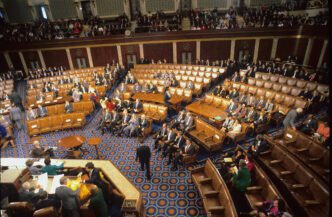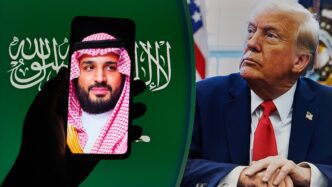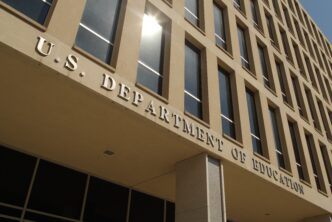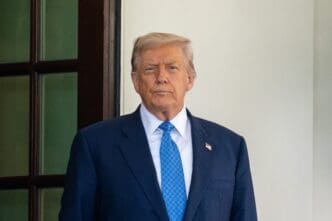Executive Summary
The Story So Far
Why This Matters
Who Thinks What?
South Korean President Lee Jae Myung successfully navigated a potentially challenging meeting with President Donald Trump in the Oval Office, employing a strategy of flattery that helped to smooth over prior tensions and focus discussions on North Korea. The meeting, which occurred hours after Trump posted a critical message on Truth Social questioning political events in South Korea, saw the leaders find common ground and largely avoid public disagreements on thorny trade and defense issues.
Lee’s Flattery Strategy
President Lee’s team had expressed nervousness ahead of the meeting, citing President Trump’s historical wariness of South Korea, a key US ally. Trump has previously accused South Korea of not contributing enough to the cost of US troops stationed on the peninsula and criticized its defense spending and trade surplus with the US.
Lee, a left-wing politician with a reputation in Washington for past skepticism of the US military alliance and a desire for stronger ties with China, was seen by some US conservative commentators as “anti-American.” His team feared he might face one of Trump’s well-known Oval Office dressing downs.
The situation was further complicated by Trump’s Truth Social post hours before the meeting, which alluded to a “Purge or Revolution” in South Korea. This appeared to reference President Lee’s government’s investigations into former President Yoon Suk Yeol and his administration, an issue that had drawn criticism from the far-right in South Korea and some US circles.
However, when the meeting commenced, President Trump raised the issue but quickly dismissed it as a probable misunderstanding. Lee’s strategy of flattery proved effective, beginning with praise for the Oval Office’s “bright and beautiful” new look and extending to commendation for Trump’s personal rapport with North Korean leader Kim Jong Un.
Lee urged Trump to act as a “peacemaker” between the North and South, stating, “The only person who can make progress is you, Mr. President. If you become the peacemaker, then I will assist you by being a pacemaker.” He even made a joke about building a Trump Tower in North Korea and playing golf there.
North Korea and Kim Jong Un’s Role
Despite the historical animosity between South Korea and North Korea, discussions regarding Kim Jong Un became a rare area of common ground for the two leaders. President Lee initiated the conversation, praising President Trump’s relationship with the North Korean leader and asking him to mediate peace on the Korean peninsula.
Lee’s approach to North Korea differs from his predecessor’s, who was accused of antagonizing Kim Jong Un. Lee seeks to establish peaceful relations with the North and believes President Trump has a greater chance of achieving this. Trump, who met Kim three times during his previous term, frequently mentions the North Korean dictator, famously stating they “fell in love” through letters, though no deal to limit North Korea’s nuclear program was reached.
President Trump commented, “I spent a lot of free time with him, talking about things that we probably aren’t supposed to talk about. I get along with him really well. I look forward to meeting with Kim Jong Un in the appropriate future.”
The willingness of Kim Jong Un to engage with either Trump or Lee remains uncertain. North Korea has consistently rejected Lee’s overtures and US attempts to restart dialogue, although it has not entirely closed the door on future talks with Trump, suggesting they would need to be on new terms that do not involve surrendering its nuclear weapons.
Trade and Defense Issues Largely Unaddressed
While the primary purpose of President Lee’s visit was to discuss the recent trade deal between the two nations and the role of US troops in South Korea, both leaders largely avoided specific details on these contentious issues during their public remarks in the Oval Office.
South Korea recently negotiated US tariffs on its goods down to 15%, after President Trump had threatened rates as high as 25%. This agreement came after South Korea committed to investing $350 billion in the US, with $150 billion allocated to assist in US shipbuilding efforts. South Korea is a global leader in shipbuilding, second only to China.
President Trump stated, “I think we have a deal done” on trade, without providing further details but emphasizing the importance of the economic partnership. He added that the US and South Korea “need each other” for trade, praising South Korean products while noting the US would trade oil and gas with them.
President Trump also sidestepped a question regarding the potential withdrawal of US troops from South Korea, an idea reportedly under consideration by the White House. He has previously accused South Korea of not adequately contributing to its defense. Additionally, Trump floated the idea of the US owning the land housing Osan Air Base, jointly operated by the US and South Korea.
The meeting between President Lee and President Trump underscored the complex dynamics of the US-South Korea alliance, with a focus on personal diplomacy and the enduring challenge of North Korea. While immediate contentious issues were largely skirted, the engagement highlighted both leaders’ willingness to seek common ground amidst ongoing geopolitical shifts.








